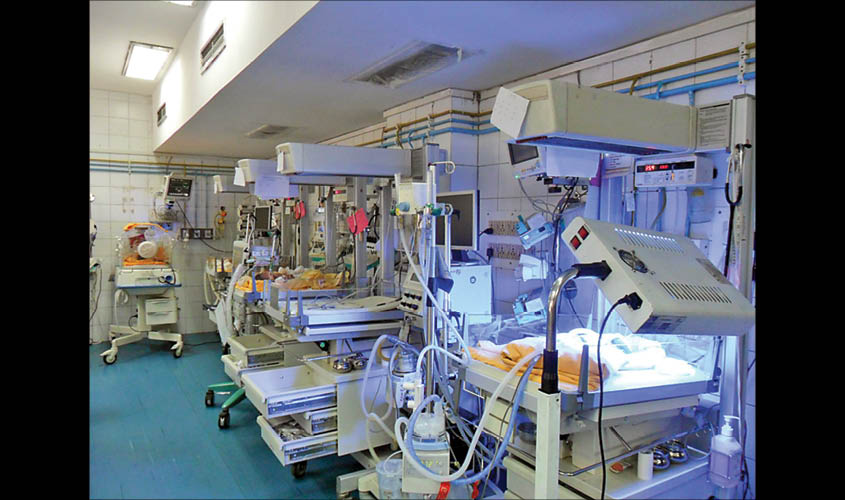Showcased at the Harvard Medical School, Saans is a low-cost portable device to provide breathing support to infants in a non-ICU setting. The product fulfils a critical need in birthing centres.
It is ironical how, when India is vying to be a global superpower, over 3.5 million premature babies struggle to survive here due to a lack of adequate medical facilities. According to WHO, this is by far the highest infant-mortality rate in the world, accounting for almost a quarter of the global incidences. Prematurity leads to a number of complications, such as hypothermia, infection, and respiratory distress, all of which, if not managed appropriately, can lead to death. This directly points to our high, though declining, rate of neonatal mortality. Over 6 lakh neonatal deaths occurred in India in 2017 alone. Most such deaths are avoidable, with the use of the right medical technologies at the right time—technologies which are often not available or used appropriately.
Of all prematurity-related conditions, respiratory distress syndrome (RDS) related deaths are particularly heart-breaking, as these are due to the non-availability of a simple technology called Continuous Positive Airway Pressure (CPAP). Babies with this condition need breathing support, which is provided by CPAP machines that are installed in neonatal intensive care units (NICU). Unlike in the West, where all births happen in hospitals with NICUs (and CPAP machines), most babies with RDS are born in primary and community health centres, and private maternity homes in India. These centres do not have these machines, and the babies need to be transferred to the nearest NICU—with pure oxygen, or rudimentary manual breathing support (ambu-bag), during transport. Unfortunately, most often these options either are not available or don’t work, and over 50,000 babies die each year on the way to
the NICU.
Our team, stationed at a top hospital NICU, witnessed this tragedy first-hand. Two babies were brought in by anxious parents with ambu-bag support, but they were declared dead on arrival. On further research, we found that these are not rare instances but happen frequently. While neonatal CPAP systems have been available for over 20 years, they are all designed for the NICU. They are non-portable, require electricity and compressed gases, and are complex to operate. Since this worked for the West, no attempt had been made to create a neonatal CPAP for non-NICU settings, or for transport, for the longest time in India. InnAccel’s critical care division Coeo Labs, decided to bridge this gap by creating a new kind of neonatal CPAP system that would suit the requirement in India.

Through on-site research, the team observed that less than 25% of babies had access to an ambulance for transport, and only 10% of babies had ambulances with CPAP provision. Most babies were transported through cars, rickshaws or buses to the nearest NICU. Keeping these factors in mind, we designed Saans—the world’s first portable neonatal CPAP device to provide breathing support to infants suffering from RDS in non-NICU settings. Weighing less than 5kg, Saans is portable, and it can work on electricity or on its own rechargeable battery, or compressed gases. Robust and easy-to-use, it is also the world’s first CPAP device to have a manual powering option. Globally recognised as a ground-breaking device, Saans has been showcased at the Harvard Medical School and selected as a “Top Global Innovation” by the American Society of Mechanical
Engineers.
Saans is currently in field trials and has performed exceedingly well. It has been used on over 80 babies, with a 100% survival rate. Most of these babies would not have survived if Saans was not available. The product fulfils a critical need in birthing centres, where it can be used for a few hours to stabilise the baby, or can be used in any transport situation that may be used to transfer the baby to the NICU. In extensive testing, Saans has been found equally efficient as imported NICU CPAPs, with all the additional features that make it the right device for non-NICU settings.
Saans exemplifies the type of innovation that India truly needs. It addresses a problem that is seen in India (and other emerging markets) but not in the West. It does so with a deep understanding of the problem and the healthcare ecosystem, and its limitations, around the problem. It creates an entirely new, patented product. Rather than being just a low-cost version of existing products, Saans is a true innovation that brings features to neonatal CPAPs that have not existed before. And, with these features, makes CPAP therapy possible in settings where it wasn’t available before. Above all, Saans is affordable for the average birthing centre, thus making CPAP therapy truly accessible to the masses.
There are many such healthcare problems that are faced by average Indians. However, these can be solved through the creation of novel technologies and products. Such products can save lives by reducing preventable deaths, and improving lives by making diagnosis and treatment better, faster and cheaper.
The author is CEO and founder, InnAccel Technologies, the company behind the device Saans

